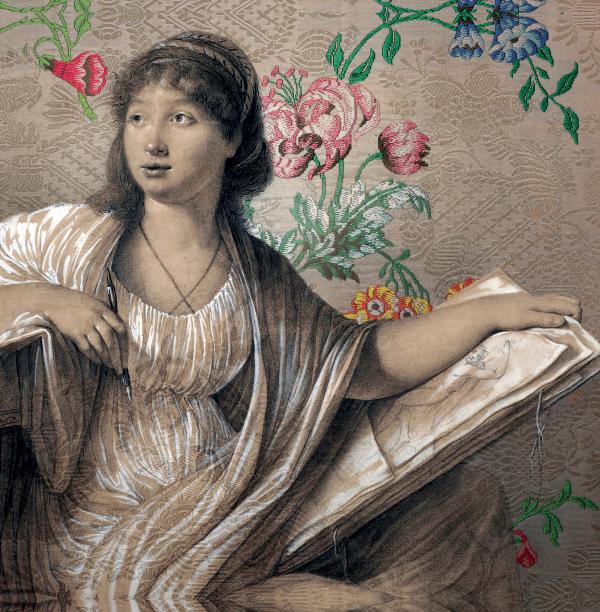Making Her Mark: A History of Women Artists in Europe, 1400-1800
Division of Lifelong Learning

The artists in “Making Her Mark” drew with verve, taking on such taboo subjects as the male nude.
—Composite of Anne Guéret, Portrait of an Artist with a Portfolio (Self-Portrait?). c. 1793. Katrin Bellinger Collection, photo by Matthew Hollow; and Anna Maria Garthwaite, Length of brocaded silk tobine. 1749. Baltimore Museum of Art: Angelica Yonge Pearre Fund, photo by Mitro Hood

The artists in “Making Her Mark” drew with verve, taking on such taboo subjects as the male nude.
—Composite of Anne Guéret, Portrait of an Artist with a Portfolio (Self-Portrait?). c. 1793. Katrin Bellinger Collection, photo by Matthew Hollow; and Anna Maria Garthwaite, Length of brocaded silk tobine. 1749. Baltimore Museum of Art: Angelica Yonge Pearre Fund, photo by Mitro Hood
Making Her Mark: A History of Women Artists in Europe, 1400-1800 aims to correct the broadly held but mistaken belief that women artists in Europe were rare and less talented than their male counterparts. For centuries, women in Europe who achieved professional artistic careers were deemed anomalous or exceptional, while those who engaged in creative pursuits in the home were dismissed as amateurs.
Making Her Mark displays over 200 works from the 15th to 18th century that were made exclusively by women or toward which women contributed their labor. The displayed works range from royal portraits and devotional sculptures to embroidered objects, tapestries, costumes, wax sculptures, metalwork, ceramics, graphic arts, furniture, and more. Works by artists such as Sofonisba Anguissola, Artemisia Gentileschi, Judith Leyster, Luisa Roldán, Rosalba Carriera, Rachel Ruysch, and Élisabeth Vigée Le Brun join exceptional products of female artisanal collectives and talented amateurs who operated outside of the male-dominated professional arena and often remained anonymous in the historical record.
Making Her Mark was named a “must-see” exhibition by Vogue and a “sure-to-be-historic show” by The New York Times. Read an essay about the exhibition in NEH’s Humanities magazine.